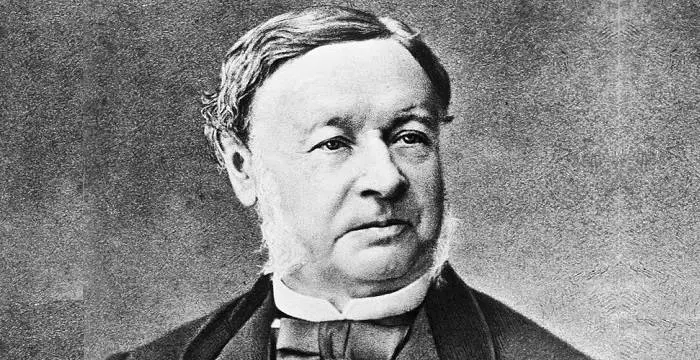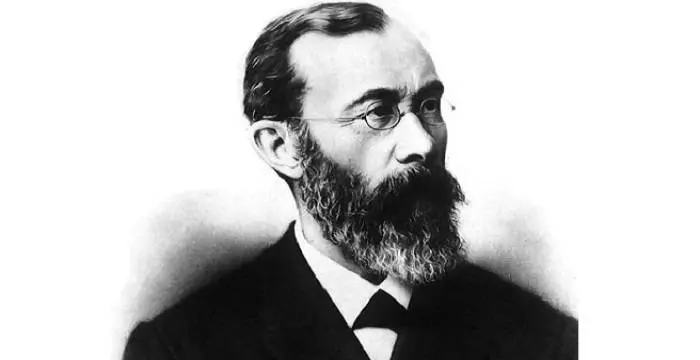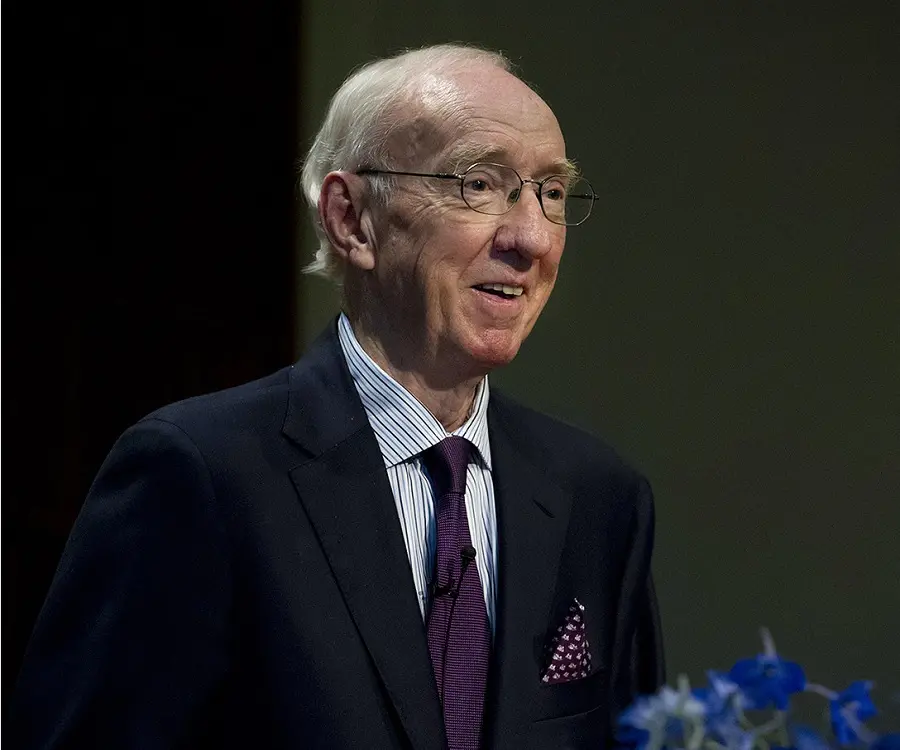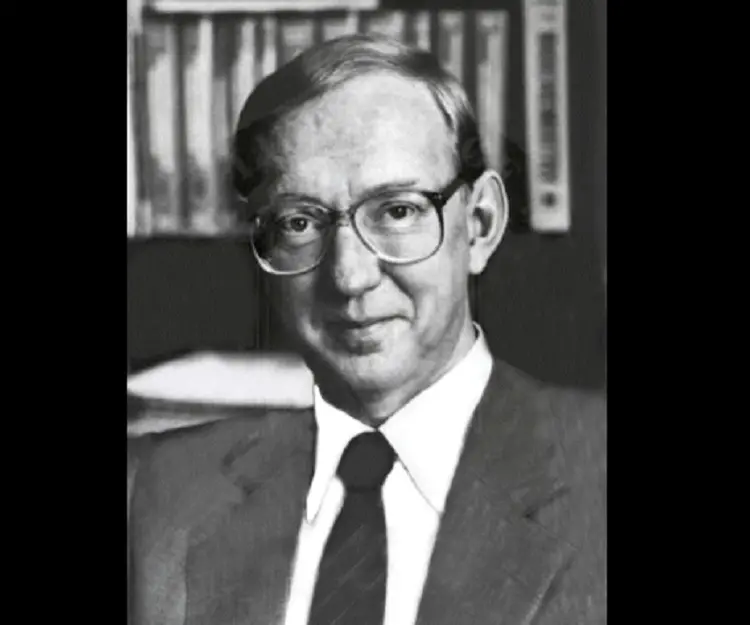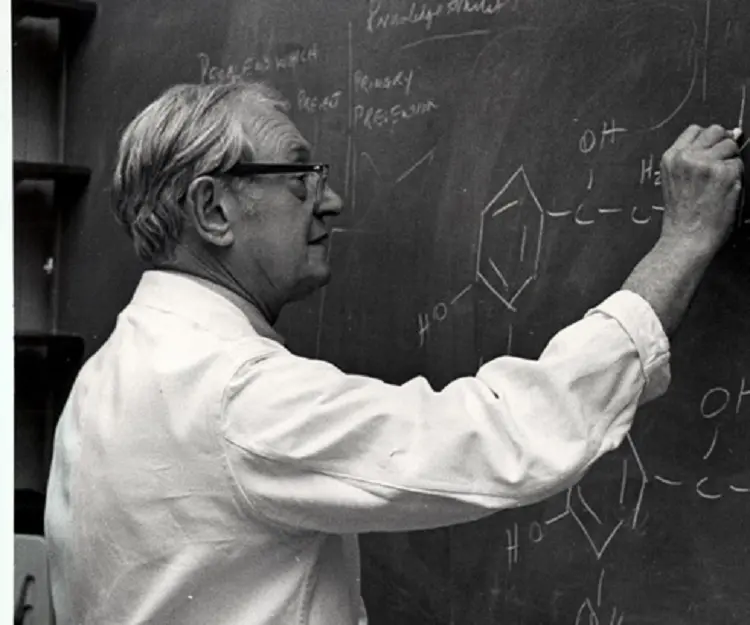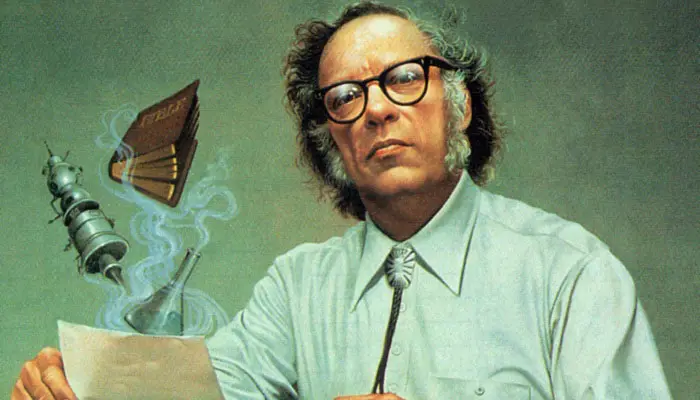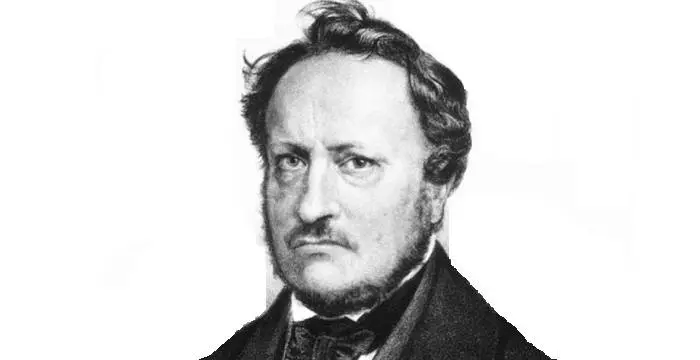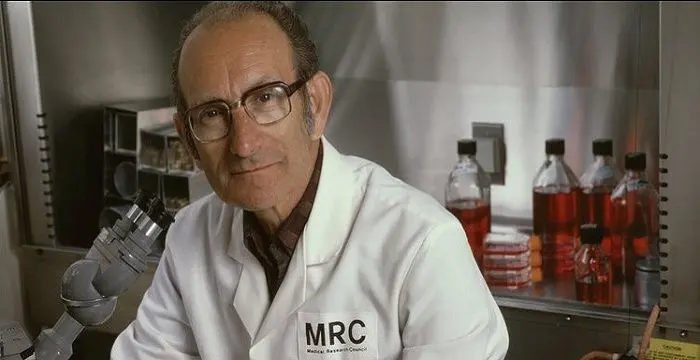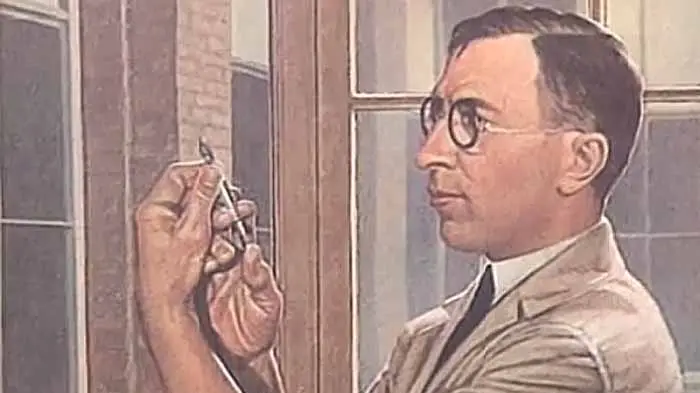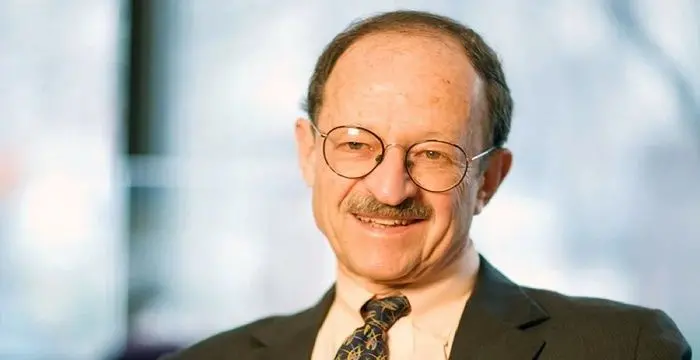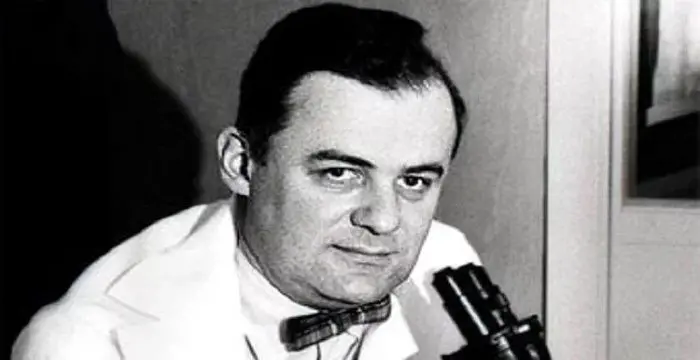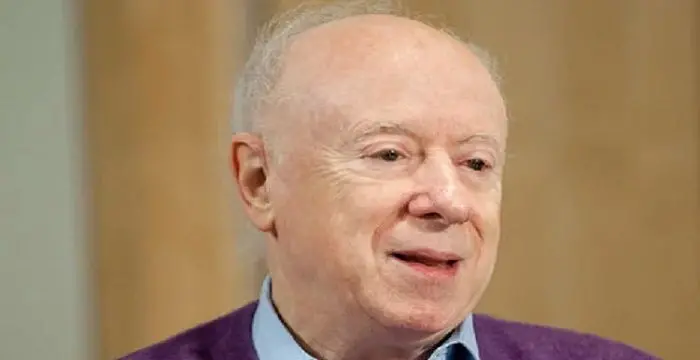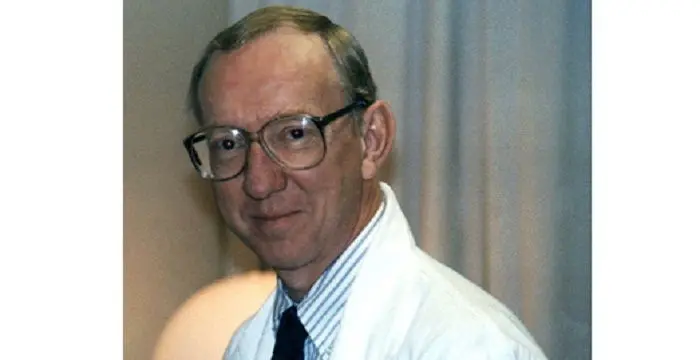
Bengt I. Samuelsson - Medical Scientists, Family and Personal Life
Bengt I. Samuelsson's Personal Details
Bengt I
| Information | Detail |
|---|---|
| Birthday | May 21, 1934 |
| Nationality | Swedish |
| Famous | Scientists, Medical Scientists, Physiologists, Biochemists |
| Known as | Bengt Ingemar Samuelsson |
| Birth Place | Halmstad, Sweden |
| Height | 183 |
| Gender | Male |
| Net Worth | $0.03 million as of March 7,2017 |
| Sun Sign | Taurus |
| Born in | Halmstad, Sweden |
| Famous as | Biochemist |
// Famous Physiologists
Theodor Schwann
Theodor Schwann was a German physiologist who discovered the Schwann cells in the peripheral nervous system. This biography of Theodor Schwann provides detailed information about his childhood, life, achievements, works & timeline.
Wilhelm Wundt
Wilhelm Wundt was a renowned doctor who conducted pioneering studies on experimental psychology. To know more about his childhood, career, profile and timeline read on
Charles Best
Charles Best was a great scientist and a renowned physiologist who is remembered for being the co-discoverer of insulin. Read this biography to learn about his profile, childhood, life and timeline.
Bengt I. Samuelsson's photo
Who is Bengt I. Samuelsson?
Bengt I. Samuelsson is a Swedish biochemist, who, along with Sune K. Bergström and John R. Vane, won the 1982 Nobel Prize for Physiology or Medicine “for discoveries concerning prostaglandins and related biologically active substances". While studying medicine at the University of Lund, Samuelsson met his mentor, Sune K. Bergström, who at that time was working on prostaglandins at the same university. Although Samuelsson initially wanted to work on cholesterol metabolism, he soon changed his mind and joined Bergström’s team. Later, he followed his mentor to Karolinska Institute in Stockholm and there he continued both his medical studies and his graduate work. Subsequently after receiving his degrees, he joined his alma mater as Assistant Professor of Medical Chemistry and continued his research work with Bergström. After years of painstaking work, Samuelson was able describe the molecular structure of prostaglandins and also to show that the compound is derived from arachidonic acid. Later, he began to concentrate on the transformation products of arachidonic acid, which in turn led to the identification of endoperoxides, thromboxanes and the leukotrienes. He also showed how this acid combines with oxygen to form prostaglandins. In a symposium held in 2014, scientists from all over the world hailed him as the founder of the research field Lipid Mediators.
// Famous Scientists
Juliane Koepcke
Juliane Koepcke is a German-Peruvian biologist, who was the lone survivor among the 92 passengers and crew of the ill-fated LANSA Flight 508 that crashed in the Peruvian rainforest on 24 December 1971. Know more about her life in this biography.
Henry Cavendish
Henry Cavendish was a theoretical chemist and physicist, renowned for discovery of hydrogen and calculation of the mass of earth. To know more about his childhood, profile, timeline and career read on
Konstantin Tsiolkovsky
Konstantin Tsiolkovsky was a Russian rocket scientist and a pioneer of astronautics. This biography provides detailed information about his childhood, family, personal life, career, achievements, etc.
Childhood & Early Years
Bengt Ingemar Samuelsson was born on 21 May 1934, in Halmstad in southwest Sweden, to Anders Samuelsson and Kristina Nilsson Samuelsson. He was the only child of his parents.
Bengt had his early education at local public schools. Later, he entered University of Lund to study medicine. On earning his B.S. degree in biology, he decided to take up cholesterol metabolism and its reaction mechanisms for his graduate work. Instead, he was picked up by Sune Bergström, who at that time, was the professor of physiological chemistry at the University of Lund and was working on prostaglandins.
At the University of Lund, Bergström gathered a team of graduate students and started his his work on prostaglandins. Samuelsson was one of them. By 1957, using countercurrent fractionations and partition chromatography, their team isolated two prostaglandin compounds, E1 and F1.
A year later in 1958, Bergström joined Karolinska Institute in Stockholm as a professor of chemistry and moved his entire research team with him. Samuelsson also went with him.
At Karolinska, they continued with their research on prostaglandin. Concurrently with his graduate work in biochemistry, Samuelsson continued his medical studies. Finally, in 1960, he finished his dissertation and became docent in medical chemistry. Then in 1961, he received his MD degree from Karolinska Institute.
Career
In 1961, Samuelsson was appointed as the Assistant Professor of Medical Chemistry at Karolinska Institute Concurrently, he also received one-year research fellowship at Department of Chemistry, Harvard University. He went to the United States in the same year and joined Harvard University as research fellow.
In 1962, on the completion of the fellowship period, Samuelsson returned to Karolinska Institute as Assistant Professor. Here, he rejoined Bergström’s team and resumed his work on prostaglandins. Later, he successfully determined the molecular structure of the compound and started working on synthesizing it.
In 1964, they established that prostaglandins are derived from an unsaturated fatty acid, called arachidonic acid. Later, Samuelsson developed a process by which arachidonic acid was first combined with oxygen to form endoperoxides, which was later converted into prostaglandins.
In 1967, Samuelsson left Karolinska Institute to join Royal Veterinary College at Stockholm as the Professor of Medical Chemistry. Here too, he continued his work on prostaglandins, establishing its importance on livestock breeding and other veterinary applications.
In 1973, he returned to Karolinska Institute as Professor of Medical and Physiological Chemistry. At the same time, he also became the Chairman of the Department of Chemistry. Also in 1973, he discovered thromboxane, which is known for its blood clotting properties.
In 1976, he went to the USA to spend one term at the Harvard University as visiting Professor in Chemistry. In spite of his academic responsibilities, he kept on his research work and in 1978, discovered leukotrienes, which is produced in leukocytes by oxidation of arachidonic acid.
On July 1, 1978, Samuelsson became the Dean of the Medical Faculty, Karolinska Institute and remained at the post till June 30, 1983.
On July 1, 1983, he became the Rector (the Vice Chancellor) of the institute, a position he held till his retirement in 1995.
His later works involved studying the chemistry, biology and biochemistry of the three compounds he had discovered: endoperoxides, thromboxanes and leukotrienes. He especially put stress on their contribution in biological control systems.
In the 1980s and 1990s, he laid especial stress on the effects of drugs on leukotriene pathways and studied new agents, which might have the capacity to inhibit the actions of leukotrienes. These researches made significant contribution to different medical conditions like thrombosis, inflammation, and allergy.
Major Works
Samuelsson’s work on prostaglandins remains his most significant contribution to physiology and medicine. He was not only the first to describe its molecular structure, but he also showed that the compound is derived from an arachidonic acid, found in certain vegetable oils and meats. Later, he showed how this acid combines with oxygen to form prostaglandins.
Awards & Achievements
In 1982, Samuelsson received Nobel Prize in Physiology or Medicine for his “discoveries concerning prostaglandins and related biologically active substances". He shared the prize with his mentor Sune K. Bergström, who worked with him on the same project and also with John R. Vane, who worked separately on it.
Personal Life & Legacy
Samuelsson met his future wife, Karin Bergstein, while he was a student at University of Lund. Later they got married and the couple has one son, Bo, and two daughters, Elisabet and Astrid.
In August 2014, researchers from all around the world met for a three-day symposium held in Karolinska Institutet. In this symposium, they honored Professor Samuelsson as the founder of the research field Lipid Mediators.
On April 22, 2015, The Bengt Samuelsson Institute of Life Science was inaugurated in Jiangyin City of China. The institute focuses on the development of biomedical and pharmaceutical projects.
// Famous Biochemists
Robert Huber
Robert Huber is a German biochemist and Nobel Laureate. Check out this biography to know about his childhood, life, achievements, works & timeline.
Charles Best
Charles Best was a great scientist and a renowned physiologist who is remembered for being the co-discoverer of insulin. Read this biography to learn about his profile, childhood, life and timeline.
Isaac Asimov
Isaac Asimov was an American professor of biochemistry and a renowned author of science fiction and popular science books. Read this biography to know more about his life.
Bengt I. Samuelsson's awards
| Year | Name | Award |
|---|---|---|
Other | ||
| 0 | 1982 - Nobel Prize in Physiology or Medicine | |
| 0 | 1975 - Louisa Gross Horwitz Prize | |
| 0 | 1981 - Gairdner Foundation International Award | |
| 0 | 1977 - Albert Lasker Award for Basic Medical Research | |
Bengt I. Samuelsson biography timelines
- // 21st May 1934Bengt Ingemar Samuelsson was born on 21 May 1934, in Halmstad in southwest Sweden, to Anders Samuelsson and Kristina Nilsson Samuelsson. He was the only child of his parents.
- // 1957At the University of Lund, Bergström gathered a team of graduate students and started his his work on prostaglandins. Samuelsson was one of them. By 1957, using countercurrent fractionations and partition chromatography, their team isolated two prostaglandin compounds, E1 and F1.
- // 1958A year later in 1958, Bergström joined Karolinska Institute in Stockholm as a professor of chemistry and moved his entire research team with him. Samuelsson also went with him.
- // 1960 To 1961At Karolinska, they continued with their research on prostaglandin. Concurrently with his graduate work in biochemistry, Samuelsson continued his medical studies. Finally, in 1960, he finished his dissertation and became docent in medical chemistry. Then in 1961, he received his MD degree from Karolinska Institute.
- // 1961In 1961, Samuelsson was appointed as the Assistant Professor of Medical Chemistry at Karolinska Institute Concurrently, he also received one-year research fellowship at Department of Chemistry, Harvard University. He went to the United States in the same year and joined Harvard University as research fellow.
- // 1962In 1962, on the completion of the fellowship period, Samuelsson returned to Karolinska Institute as Assistant Professor. Here, he rejoined Bergström’s team and resumed his work on prostaglandins. Later, he successfully determined the molecular structure of the compound and started working on synthesizing it.
- // 1964In 1964, they established that prostaglandins are derived from an unsaturated fatty acid, called arachidonic acid. Later, Samuelsson developed a process by which arachidonic acid was first combined with oxygen to form endoperoxides, which was later converted into prostaglandins.
- // 1967In 1967, Samuelsson left Karolinska Institute to join Royal Veterinary College at Stockholm as the Professor of Medical Chemistry. Here too, he continued his work on prostaglandins, establishing its importance on livestock breeding and other veterinary applications.
- // 1973In 1973, he returned to Karolinska Institute as Professor of Medical and Physiological Chemistry. At the same time, he also became the Chairman of the Department of Chemistry. Also in 1973, he discovered thromboxane, which is known for its blood clotting properties.
- // 1976 To 1978In 1976, he went to the USA to spend one term at the Harvard University as visiting Professor in Chemistry. In spite of his academic responsibilities, he kept on his research work and in 1978, discovered leukotrienes, which is produced in leukocytes by oxidation of arachidonic acid.
- // 1st Jul 1978 To 30th Jun 1983On July 1, 1978, Samuelsson became the Dean of the Medical Faculty, Karolinska Institute and remained at the post till June 30, 1983.
- // 1982In 1982, Samuelsson received Nobel Prize in Physiology or Medicine for his “discoveries concerning prostaglandins and related biologically active substances". He shared the prize with his mentor Sune K. Bergström, who worked with him on the same project and also with John R. Vane, who worked separately on it.
- // 1st Jul 1983 To 1995On July 1, 1983, he became the Rector (the Vice Chancellor) of the institute, a position he held till his retirement in 1995.
- // Aug 2014In August 2014, researchers from all around the world met for a three-day symposium held in Karolinska Institutet. In this symposium, they honored Professor Samuelsson as the founder of the research field Lipid Mediators.
- // 22nd Apr 2015On April 22, 2015, The Bengt Samuelsson Institute of Life Science was inaugurated in Jiangyin City of China. The institute focuses on the development of biomedical and pharmaceutical projects.
// Famous Medical Scientists
Johannes Peter Müller
Johannes Peter Müller was a German physiologist and comparative anatomist. Check out this biography to know about his childhood, life, achievements, works & timeline.
Cesar Milstein
Cesar Milstein was an Argentinian biochemist who received the Nobel Prize for his discovery of monoclonal antibody. Explore this biography to get details about his life, career and scientific discoveries.
Frederick Banting
Frederick Banting was a Canadian medical scientist and physician who won the Nobel Prize for discovering insulin. Check out this biography to know about his childhood, family life, achievements and other facts related to his life.
Harold E. Varmus
Harold E. Varmus is an American scientist who won a share of the 1989 Nobel Prize in Physiology or Medicine. This biography of Harold E. Varmus provides detailed information about his childhood, life, achievements, works & timeline.
Frederick Chapman Robbins
Frederick Chapman Robbins was an American paediatrician and virologist who was one of the joint winners of the 1954 Nobel Prize in Physiology 1954. Check out this biography to know about his childhood, life, achievements, works & timeline.
Joseph L. Goldstein
Joseph L. Goldstein is an American molecular geneticist who won a share of the Nobel Prize in Physiology or Medicine in 1985.
Bengt I. Samuelsson's FAQ
What is Bengt I. Samuelsson birthday?
Bengt I. Samuelsson was born at 1934-05-21
Where is Bengt I. Samuelsson's birth place?
Bengt I. Samuelsson was born in Halmstad, Sweden
What is Bengt I. Samuelsson nationalities?
Bengt I. Samuelsson's nationalities is Swedish
How tall is Bengt I. Samuelsson?
Bengt I. Samuelsson's height is 183
What is Bengt I. Samuelsson's sun sign?
Bengt I. Samuelsson is Taurus
How famous is Bengt I. Samuelsson?
Bengt I. Samuelsson is famouse as Biochemist
